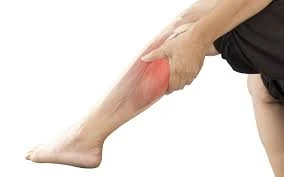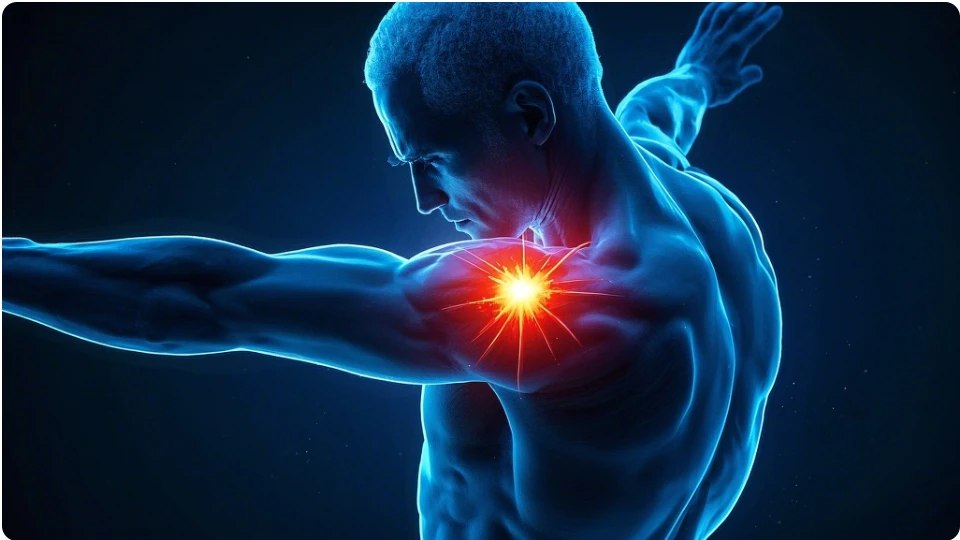
Muscle pain, also known as myalgia, is a common issue experienced by athletes, fitness enthusiasts, and even those with a sedentary lifestyle. It can be caused by strenuous exercise, improper posture, stress, dehydration, or underlying health conditions. Whether you are dealing with post-workout soreness or chronic muscle pain, knowing how to relieve muscle pain effectively can help maintain mobility and improve overall well-being.
Common Causes of Muscle Pain
Muscle pain can stem from various factors, and understanding the root cause is crucial for effective treatment:
- Delayed Onset Muscle Soreness (DOMS) – This occurs 24–48 hours after intense exercise due to microscopic tears in muscle fibers. It is a normal part of muscle adaptation and growth.
- Muscle Strain or Injury – Overstretching or tearing of muscle fibers can result in acute pain, swelling, and reduced mobility.
- Electrolyte Imbalance – Low levels of essential minerals like potassium, magnesium, and calcium can lead to muscle cramps and weakness.
- Dehydration – Lack of water intake can cause stiffness, cramps, and increased soreness.
- Lack of Proper Recovery – Skipping cool-down exercises, inadequate stretching, or insufficient nutrition can delay muscle healing.
- Chronic Conditions – Some medical conditions like fibromyalgia or autoimmune disorders can cause persistent muscle pain.
Effective Ways to Relieve Muscle Pain
1. Cold and Heat Therapy
- Ice Therapy (Cryotherapy): Applying ice packs for 15–20 minutes can help reduce swelling and numb pain, making it ideal for acute injuries.
- Heat Therapy: Heating pads, warm showers, or hot compresses increase blood flow, relax muscles, and accelerate recovery. Heat is best for chronic soreness rather than recent injuries.
2. Stay Hydrated and Maintain Electrolyte Balance
- Water helps flush out toxins and supports muscle function.
- Electrolyte-rich foods such as bananas (potassium), nuts (magnesium), and dairy (calcium) aid in muscle relaxation and prevent cramps.
- Coconut water or electrolyte drinks can replenish lost minerals after intense workouts.
3. Incorporate Stretching and Mobility Exercises
- Dynamic Stretching: Engaging in active movements like leg swings or arm circles before a workout can enhance flexibility and prevent muscle tightness.
- Static Stretching: Holding stretches post-workout for 15–30 seconds can improve flexibility and reduce soreness.
- Yoga and Foam Rolling: Both help increase circulation, loosen muscle knots, and improve recovery speed.
4. Massage Therapy and Self-Massage
- Professional deep tissue massage can help break down adhesions and increase blood flow.
- Self-massage with a foam roller (myofascial release) can relieve tension in sore muscles.
- Using essential oils like peppermint, lavender, or eucalyptus in massages can further relax the muscles and reduce inflammation.
5. Nutrition for Muscle Recovery
Proper nutrition plays a vital role in muscle healing and reducing inflammation:
- Protein-Rich Foods: Lean meats, fish, eggs, beans, and plant-based protein sources help repair muscle tissues.
- Omega-3 Fatty Acids: Found in salmon, chia seeds, and walnuts, omega-3s reduce inflammation and speed up recovery.
- Anti-Inflammatory Foods: Turmeric, ginger, berries, and green tea contain antioxidants that help alleviate muscle soreness.
- Carbohydrates: Whole grains, sweet potatoes, and quinoa replenish glycogen stores and provide sustained energy for muscle recovery.
Learn more about nutritionhttps://www.fitpeak10.com/index.php/category/nutrition/
6. Engage in Active Recovery and Low-Impact Movement
- Light physical activities such as walking, swimming, or cycling can help maintain blood circulation and ease muscle stiffness.
- Avoid complete inactivity, as this can lead to further stiffness and prolonged soreness.
- Gentle yoga and tai chi can also help improve flexibility and reduce muscle tightness.
7. Use Over-the-Counter Pain Relievers When Necessary
- Nonsteroidal anti-inflammatory drugs (NSAIDs) like ibuprofen or aspirin can temporarily relieve inflammation and discomfort.
- However, prolonged use of painkillers is not recommended as they may have side effects such as stomach irritation or kidney issues.
8. Get Sufficient Rest and Quality Sleep
- Sleep is crucial for muscle repair and overall recovery.
- Aim for 7–9 hours of uninterrupted sleep per night.
- Improve sleep quality by maintaining a consistent sleep schedule, reducing screen time before bed, and sleeping in a dark, cool environment.

Learn more about sleep qualityhttps://www.fitpeak10.com/index.php/category/mind-recovery/sleep/
9. Reduce Stress and Practice Relaxation Techniques
- Chronic stress can cause muscle tension and contribute to pain.
- Techniques like deep breathing, meditation, and progressive muscle relaxation can help relieve stress-induced muscle discomfort.
- Spending time outdoors, engaging in hobbies, and listening to calming music can also promote relaxation and overall well-being.
10. Consider Professional Help for Persistent Pain
- If muscle pain lasts more than a week, worsens over time, or is accompanied by swelling, numbness, or weakness, consult a healthcare professional.
- A physical therapist can provide targeted exercises and techniques for pain management.
- If an underlying medical condition is suspected, further evaluation and tests may be necessary.
The Role of Supplements in Muscle Recovery
Some supplements can help speed up muscle healing and reduce pain:
- BCAAs (Branched-Chain Amino Acids): Help reduce muscle breakdown and soreness post-workout.
- Collagen Supplements: Improve joint and muscle tissue repair.
- Magnesium Supplements: Help prevent muscle cramps and promote relaxation.
- Curcumin (Turmeric Extract): A powerful anti-inflammatory compound that aids in muscle pain relief.
Preventing Muscle Pain in the Future
While relieving muscle pain is crucial, prevention is even more important:
- Warm Up Properly: Always perform dynamic stretching before exercise to prepare muscles.
- Use Proper Form: Incorrect posture or poor exercise technique can lead to unnecessary strain and injuries.
- Progress Gradually: Avoid sudden increases in exercise intensity to prevent excessive muscle damage.
- Listen to Your Body: Take rest days when needed and avoid overtraining.
- Invest in Recovery Tools: Massage guns, foam rollers, and compression gear can aid in recovery.
Conclusion
Muscle pain is a natural part of physical activity, but with proper care, it doesn’t have to be debilitating. By using a combination of hydration, nutrition, stretching, active recovery, and other techniques, you can effectively relieve muscle pain and improve overall muscle health. Whether you’re recovering from an intense workout or dealing with chronic soreness, incorporating these strategies can help you feel better and maintain peak performance.


